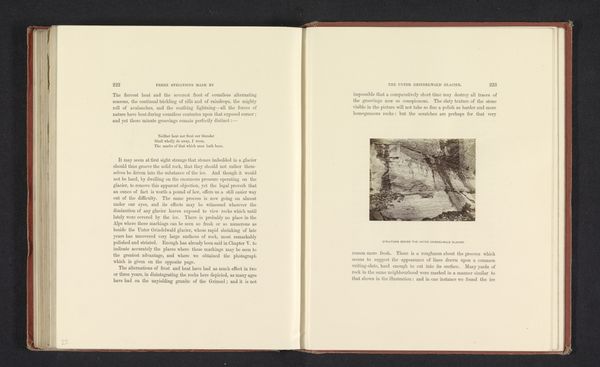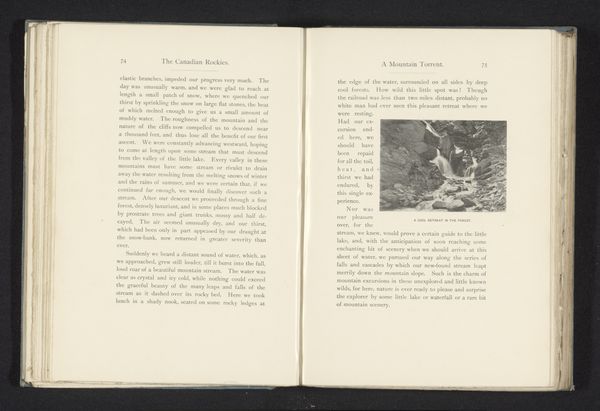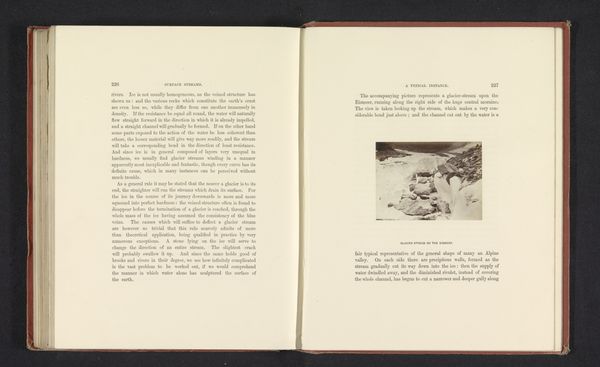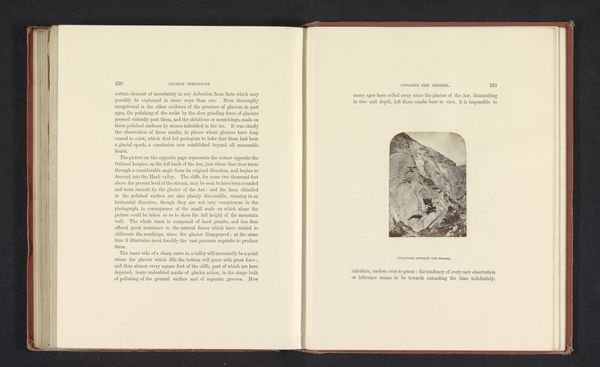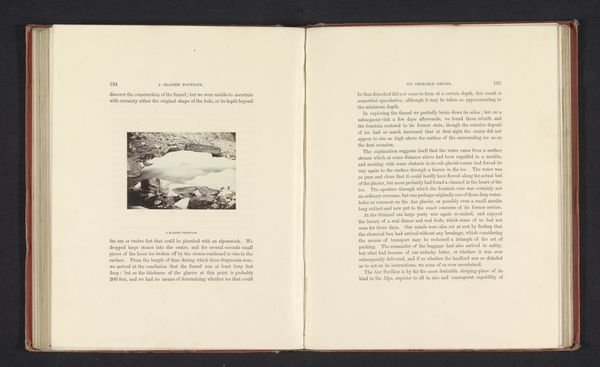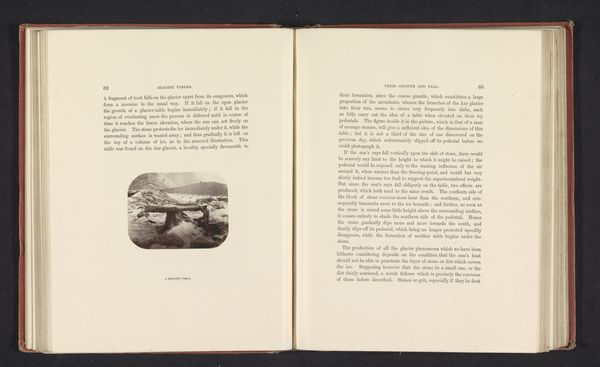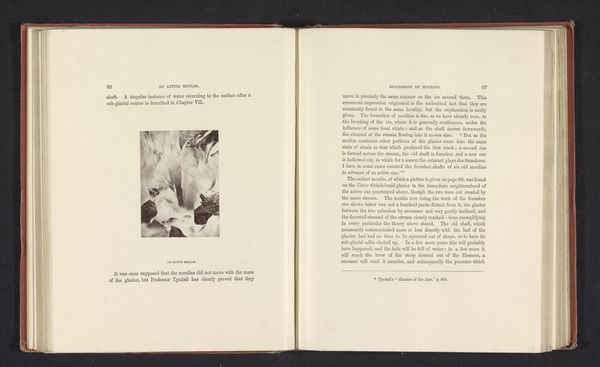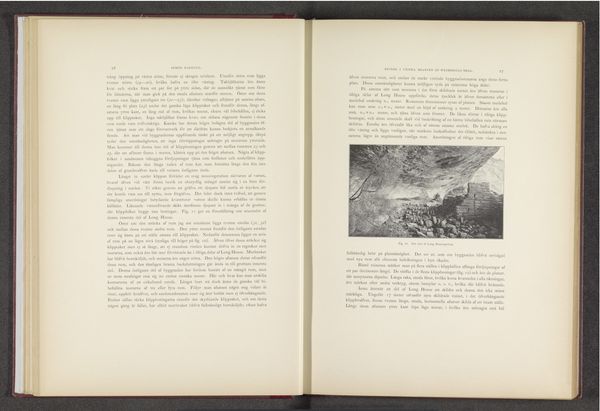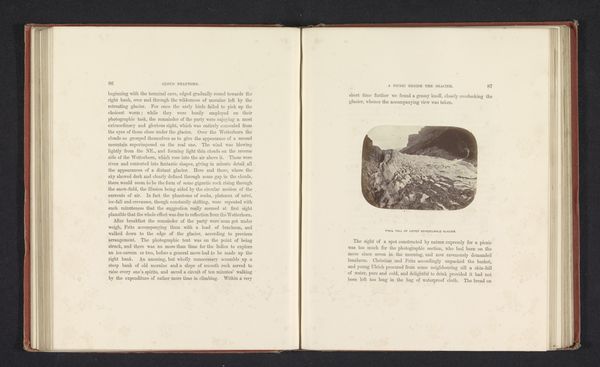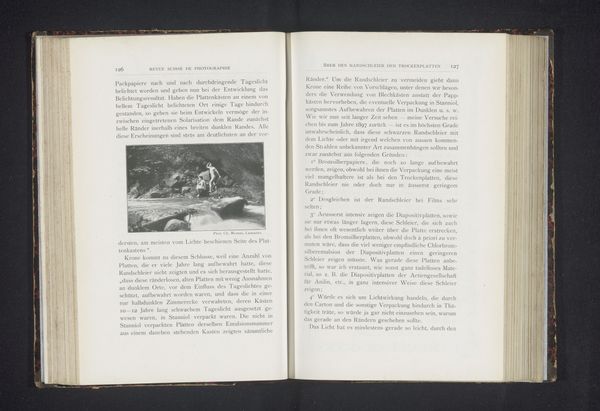
print, photography, gelatin-silver-print
#
script typeface
#
aged paper
#
paperlike
# print
#
landscape
#
river
#
personal journal design
#
photography
#
gelatin-silver-print
#
thick font
#
publication mockup
#
history-painting
#
handwritten font
#
letter paper
#
historical font
#
small font
Dimensions: height 88 mm, width 69 mm
Copyright: Rijks Museum: Open Domain
Curator: Ernest Edwards' gelatin-silver print, "The gorge of the Massa," likely taken before 1866, captures a seemingly untouched slice of the Swiss Alps. What catches your eye? Editor: It’s intense! The gorge is dark and deep. Almost feels like staring into the earth’s raw interior. Makes you wonder what geological events sculpted it. You feel so small contemplating this immensity of time. Curator: Absolutely. The photographic print exists within a bound volume of text. Photography, at this moment, was helping visualise the romantic sublime. Alpine landscapes held deep cultural significance during the mid-19th century. They symbolized the power of nature, but were also becoming crucial spaces for developing new modes of leisure, new subjectivities, and visual culture. Editor: A space between danger and respite… I can almost smell the glacial water and the pines. But the lack of people adds to this sublime rawness. Was this landscape considered part of any broader sociopolitical moment? Curator: These representations were essential to colonial and scientific practices, as sublime landscapes helped establish the imperial reach over spaces of “untamed” nature. It allowed natural history to intersect with imperial aspirations, transforming perceptions of accessibility. Editor: Right, this becomes more than a photograph—it’s a claim. And for the average citizen thumbing through these pages, seeing that vista must've been incredible. A type of escapism but packaged with subtle messages of empire… quite manipulative. Curator: Precisely! And by distributing it within this bound volume, Edwards inserts his photograph directly into contemporary dialogues on science, empire, and society. Editor: To think of this image traveling around in a book is incredible when it depicts a land that’s so removed and seemingly inaccessible. Makes me wonder about our current moment too. Curator: It invites that type of reflection. Art like this pushes us to consider how we package and circulate ideas, through different types of technology across time, like this photograph in a book, that carries complex social and historical context. Editor: And sometimes, when staring at a photograph like this, even from over a hundred years ago, we feel we are transported there to confront these complex relationships in nature.
Comments
No comments
Be the first to comment and join the conversation on the ultimate creative platform.
